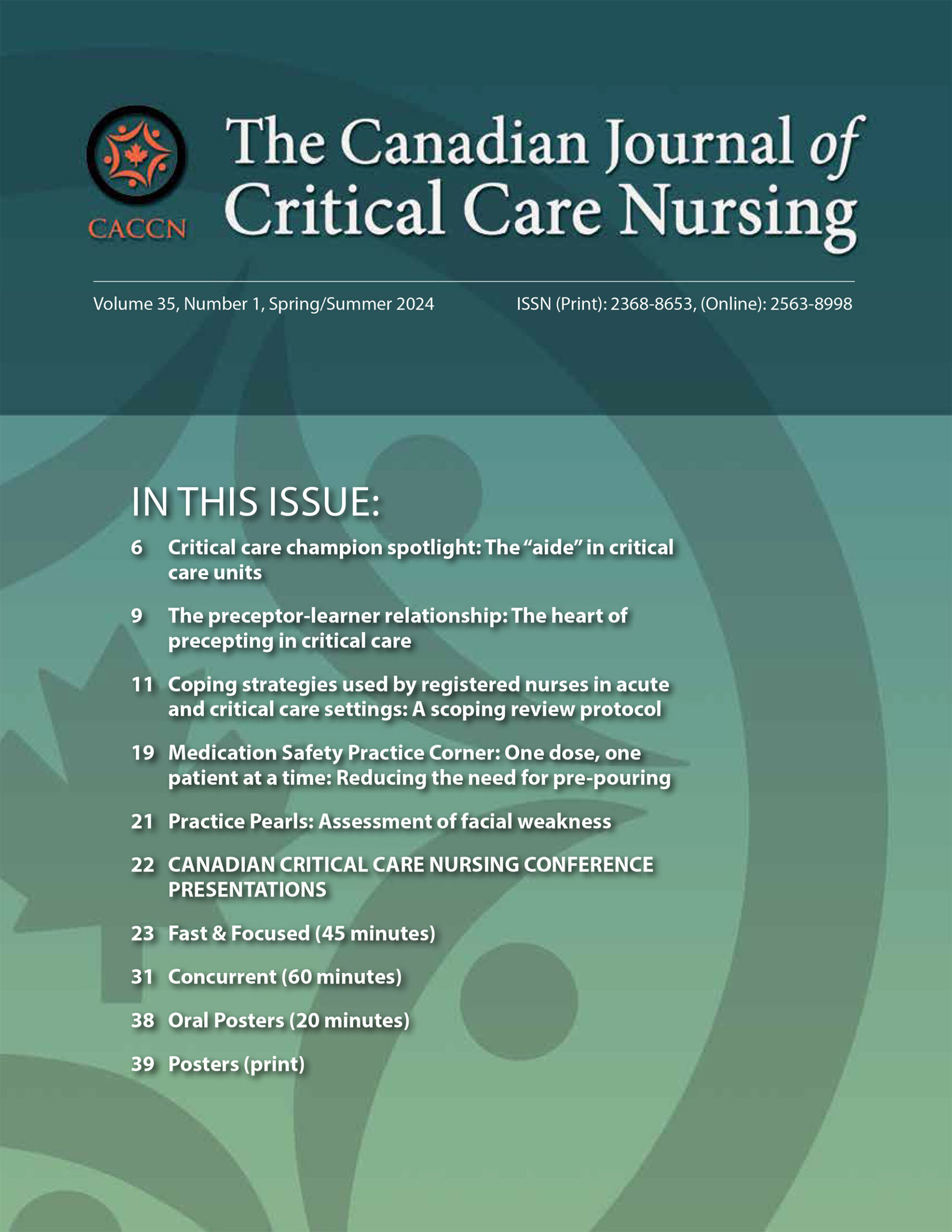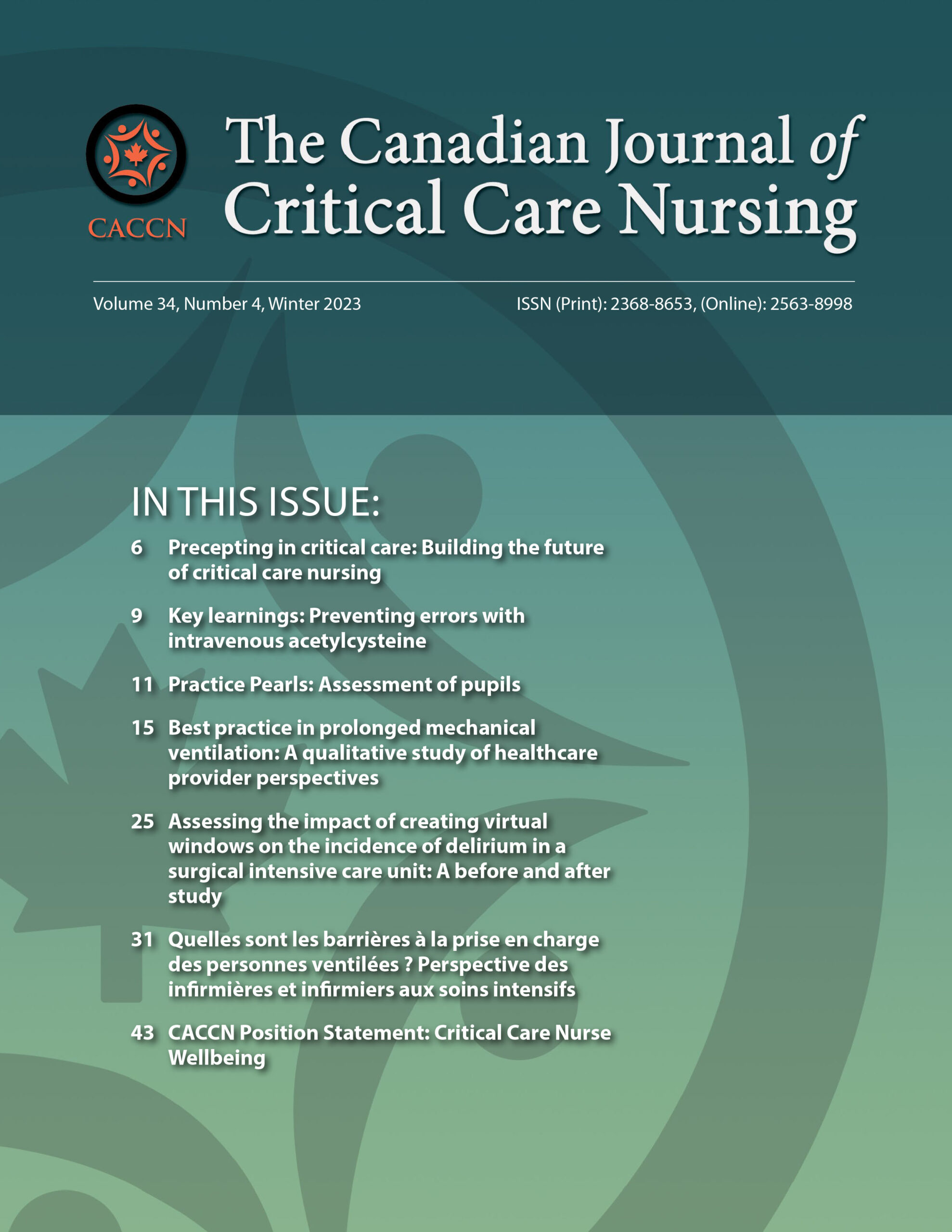Unsettling the “I do not see colour” Ideology in Nursing
Catherine Liao, RN, MSc, BSc (Hons)
As a woman of colour, I have often heard the phrase “I do not see colour because we are all the same” from nursing professors, colleagues, and students. While I used to agree with this statement, I now realize how subtle biases impact patient care when nurses are socialized into thinking we are neutral caregivers. My colour-blind perspectives were well-intentioned at the time. However, as a nurse educator, I see how neutrality in nursing education obscures how racism contributes to health disparities, making it challenging to promote health equity in health and healthcare. In this way, as nurses, we overlook how power and systemic racism embed themselves in healthcare and consequently impede nursing’s fundamental disciplinary commitment to promoting health for all equitably (Thorne, 2021; Bell, 2021).
Colour blindness represents modern or covert racism, wherein society has programmed white individuals to be ignorant about structural racism (Fu, 2015). Colour blindness asserts that all people, regardless of their ethnicity and racial identities, are the same; and in nursing, this notion of sameness is insidious in education and practice. Colour blindness minimizes and erases the lived experience of individuals who encounter prejudice related to their racial identity (Thorne, 2021). Colour blindness downplays and obscures the systematic discrimination that continues to exist. The fear of being unfairly judged or discriminated against because of the colour of your skin is an uncomfortable truth, and many of my white colleagues in the United Kingdom (UK) and Canada have been in denial.
Racism is a social determinant of health (SDOH). “I do not see colour” ignores how cultural backgrounds, identities, and skin colour may have shaped the experiences of others. This colourblind stance dismisses the reality that Indigenous, Black, and Persons of Colour (IBPOC) have different healthcare experiences or that nurses of colour do not have the same privileges as our white counterparts. For example, it is well documented that black and white patients receive differing health standards of care in the United States due to racial inequities (Kaiser Family Foundation, 2023). In the UK, there are widespread inequalities and inequities in ethnic minority groups across a range of health services – poor quality or discrimination from healthcare staff is a commonly cited reason why racialized patients avoid seeking help because they fear racist treatments (Wise, 2022). In Canada, racism and harmful stereotypes are responsible for the avoidable deaths of Indigenous patients. To name a few, Mr. Brian Sinclair, Ms. Joyce Echaquan, and Mr. Keegan Coombes. Further, in the UK, white nurses are twice as likely to get promoted as nurses of colour (Royal College of Nursing, 2022). These nursing workforce trends are yet to be studied in Canada due to the absence of disaggregated race-based data.
Unfortunately, racism and white privilege as topics remain on the margins of discussion in nursing education and practice (McGibbon et al., 2014). “I do not see colour” is problematic in nursing because it minimizes racism in healthcare. This narrative promotes individualism and meritocracy, assuming everyone has an equal opportunity for good health when racism is a key driver of health inequities for IBPOC groups (Cunningham & Scarlato, 2018). However, unsettling the colour-blindness narrative is a step towards antiracism work in nursing. Seeing in colour can guide nurses to identify how systems of oppression operate, help them recognize institutionalized racism, and empower them to eliminate discrimination that is explicitly linked to power structures and processes in health systems and nursing practice. By acknowledging that we see colour, we can contextualize health behaviours and choices and critically think about policies and practices that promote unearned privilege in dominant groups. We must go beyond understanding racism as a sum of actions and racial slurs. Racism is a combination of prejudice and power, designed to benefit and privilege whiteness in every aspect of life (Phillips-Beck et al., 2020). As nurses, when we acknowledge colour, we fully appreciate how racism persists and perpetuates itself through healthcare. This requires an angle of vision that analyses structures upon which healthcare is formed.
Self-awareness and examining our perspectives, attitudes, biases, and belief systems are good starting points for addressing colour blindness. It is essential to recognize that acknowledging colour does not mean one is racist; instead, challenging colour blindness can help us address health inequities. By using a structural perspective on health and healthcare, nurses can better understand how some groups of people persistently have worse health outcomes than others. Many resources are available for nurses who want to learn more about cultural safety and humility and become anti-racist (https://bchumanrights.ca/be-anti-racist-colour/; https://www.fnha.ca/wellness/wellness-and-the-first-nations-health-authority/cultural-safety-and-humility; https://www.aamc.org/about-us/equity-diversity-inclusion/anti-racism-resources). Many of us have wrestled with discomfort, not knowing how to support IBPOC communities without saying or doing the wrong thing. However, when we lean into our discomfort, we allow ourselves to unlearn and relearn, thus opening ourselves to conversations and moving away from the colour-blind ideology.
Catherine Liao, RN, MSc, BSc (Hons)
Co-editor, CJCCN
References
Bell, B. (2020). White dominance in nursing education: A target for anti-racist efforts. Bell, B. (2020). White dominance in nursing education: A target for anti-racist efforts. Nursing Inquiry, 27(4), pages 1-11. https://doi.org/10.1111/nin.12379
Cunningham, B. A., & Scarlato, A. S. M. (2020). Ensnared by colorblindness: Discourse on health care disparities. JAMA Internal Medicine, 180(12), 1562-1563. https://doi.org/10.18865%2Fed.28.S1.235
Fu, M. (2019). I don’t see color, all people are the same: Whiteness and color-blindness as training and supervisory Issues. Journal of Multicultural Counseling and Development, 47(3), 166-180. https://doi.org/10.1080/02703149.2015.1059212
Kaiser Family Foundation. (2021, October 7). Key data on health and health care by race and ethnicity. Retrieved April 29, 2023, from https://www.kff.org/racial-equity-and-health-policy/report/key-data-on-health-and-health-care-by-race-and-ethnicity/
McGibbon, E., Mulaudzi, F. M., Didham, P., Barton, S., & Sochalski, J. (2014). Toward decolonizing nursing: the colonization of nursing and strategies for increasing the counter-narrative. Nursing Inquiry, 21(3), 179-191. https://doi.org/10.1111/nin.12042
Phillips-Beck, W., Eni, R., Lavoie, J. G., Kinew, K. A., Achan, G. K., & Katz, A. (2020). Confronting racism within the Canadian healthcare system: Systemic exclusion of First Nations from quality and consistent care. International Journal of Environmental Research and Public Health, 17(22), 8343. https://doi.org/10.3390/ijerph17228343
Royal College of Nursing. (2022, June 8) There must be nursing leadership in all levels of the health and care services. RCN Survey. https://www.rcn.org.uk/news-and-events/news/uk-there-must-be-nursing-leadership-in-all-levels-of-the-health-and-care-services-080622
Thorne, S. (2022). Moving beyond performative allyship. Nursing Inquiry, 29(1), e12483. https://doi.org/10.1111/nin.12483
Wise, J. (2021). Racial health inequality is stark and requires concerted action, says review. BMJ, 372:n432. https://doi.org/10.1136/bmj.o382





